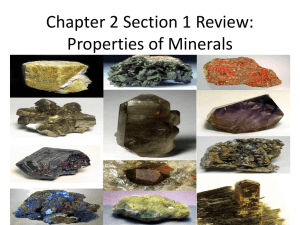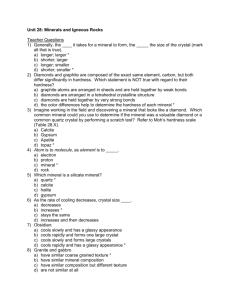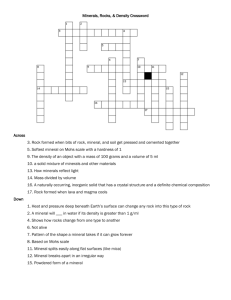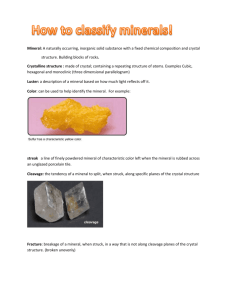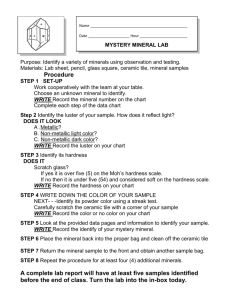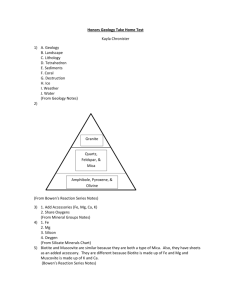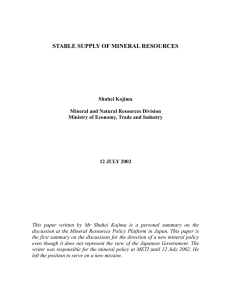Section 1 - kjpederson
advertisement
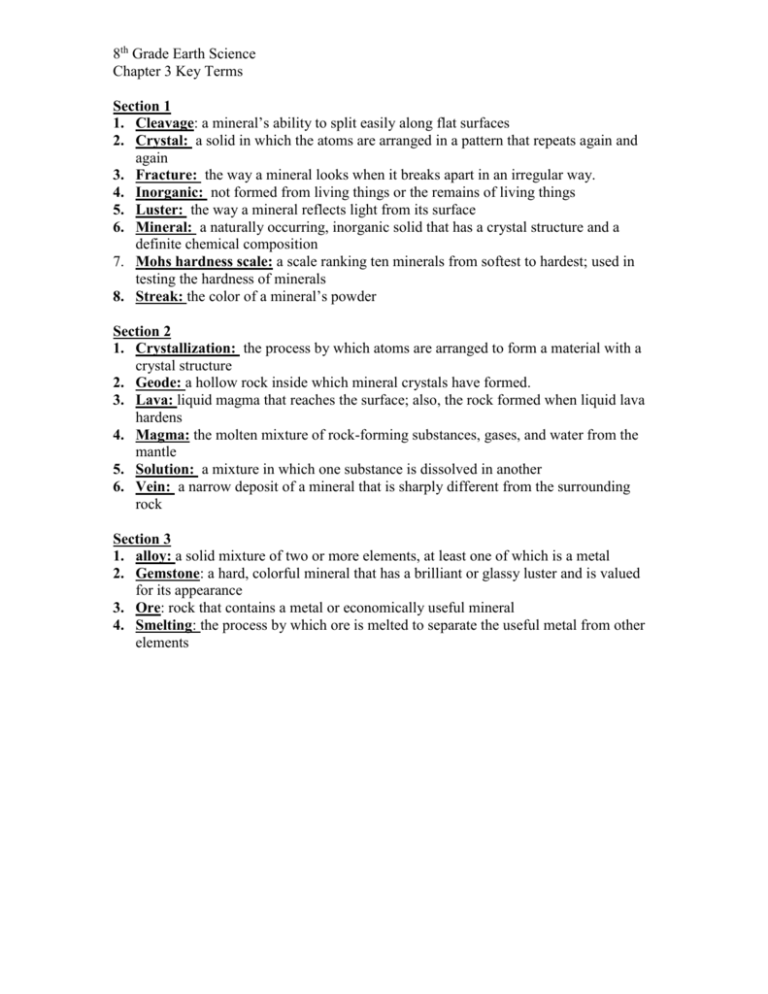
8th Grade Earth Science Chapter 3 Key Terms Section 1 1. Cleavage: a mineral’s ability to split easily along flat surfaces 2. Crystal: a solid in which the atoms are arranged in a pattern that repeats again and again 3. Fracture: the way a mineral looks when it breaks apart in an irregular way. 4. Inorganic: not formed from living things or the remains of living things 5. Luster: the way a mineral reflects light from its surface 6. Mineral: a naturally occurring, inorganic solid that has a crystal structure and a definite chemical composition 7. Mohs hardness scale: a scale ranking ten minerals from softest to hardest; used in testing the hardness of minerals 8. Streak: the color of a mineral’s powder Section 2 1. Crystallization: the process by which atoms are arranged to form a material with a crystal structure 2. Geode: a hollow rock inside which mineral crystals have formed. 3. Lava: liquid magma that reaches the surface; also, the rock formed when liquid lava hardens 4. Magma: the molten mixture of rock-forming substances, gases, and water from the mantle 5. Solution: a mixture in which one substance is dissolved in another 6. Vein: a narrow deposit of a mineral that is sharply different from the surrounding rock Section 3 1. alloy: a solid mixture of two or more elements, at least one of which is a metal 2. Gemstone: a hard, colorful mineral that has a brilliant or glassy luster and is valued for its appearance 3. Ore: rock that contains a metal or economically useful mineral 4. Smelting: the process by which ore is melted to separate the useful metal from other elements

